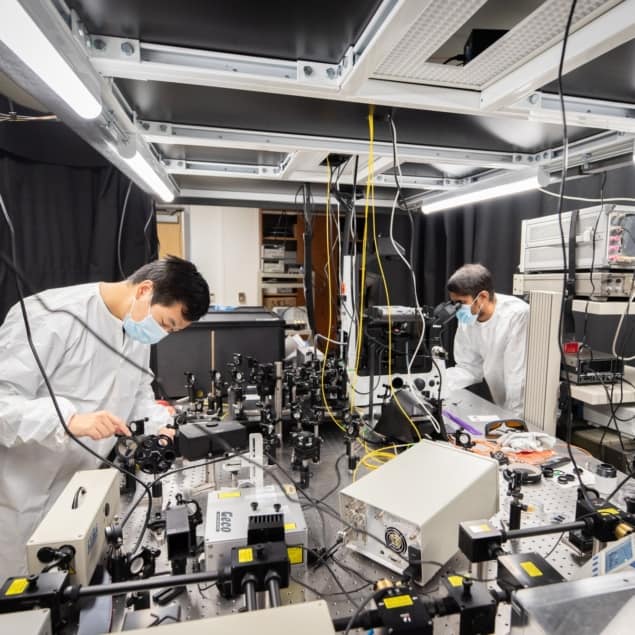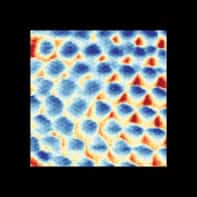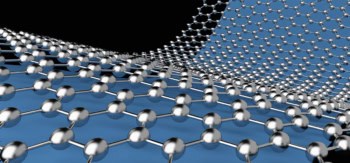
Dynamically-controlled exciton transport has been demonstrated in a 2D transition metal dichalcogenide (TMD) using surface acoustic waves (SAWs). Researchers in the US and Japan used the SAWs to induce mechanical strain in a tungsten diselenide sample at room temperature, resulting in a maximum net exciton shift of nearly 1 micron. This work is a big step towards room temperature, practical excitonic devices including cooler and more efficient electronics.
Beat the heat
Excitons are quasiparticles that are found in semiconductors and comprise electron-hole pairs. The ability to control exciton transport is crucial for functioning excitonic devices – which have a range of potential applications including sensing, energy conversion and communications.
Excitons have zero electric charge, which means that they experience much less resistance than electrons when moving through a material. Currently, the speed of computers is limited by the heat produced – and energy lost – through electrical resistance. “If you think of the past almost two decades, the computers have always been at two to three gigahertz – they never increase in speed. And that’s the reason. It just gets too hot,” says Parag Deotare, who is at the University of Michigan and corresponding author on a paper describing the research. “If you just cut down your communication energy losses, then your processing speed automatically increases. Using excitons can theoretically cut those losses significantly.” Hence, the ability to control the movement of excitons is crucial in the development of cooler and more efficient electronics.
Getting wavy
The electric neutrality of excitons creates a new problem: unlike electrons, excitons cannot be transported by applying a voltage. The solution could lie in the fact that in 2D materials, the behaviour of excitons is very sensitive to their environment – this is because every atom in a 2D material is on the surface.
The exciton energy landscape is therefore easily affected by strain and electric fields, both of which can be applied by SAWs. These are acoustic waves that travel on the surface of elastic materials and create an oscillating mechanical strain. Exciton transport using SAWs has previously been achieved in quantum-well systems made of III-V compound semiconductors. However, this only occurred at cryogenic temperatures, below -150°C. TMDs such as tungsten diselenide offer a route to higher temperatures because their large exciton binding energies mean excitons still exist at room temperature and their band gaps are direct.

In this study, Kanak Datta, a PhD student at the University of Michigan, and colleagues used radio-frequency SAWs to induce a strain in a monolayer of tungsten diselenide – thereby modulating the energy landscape. The monolayer is encapsulated to increase the exciton binding energy, which reduces the chance of exciton dissociation (separation into the constituent electron and hole) and increases stability. The chance of dissociation can be further reduced by exciting the sample optically to produce charge carriers that screen the piezoelectric field required to generate the SAWs. In this way, the effect of the mechanical strain on the exciton flux can be studied.
Surf the wave!
The researchers used spatially-resolved photoluminescence measurements to track the excitons and found that they “surfed the wave” – that is, the SAWs produced a net drift of the exciton flux in the direction of propagation of the SAW. This drift was proportional to the input power to the SAW and reached a maximum distance of nearly 1 micron and a maximum average drift velocity of 600 m/s.

Strain guides the flow of excitons in 2D materials
The drift, however, was not linear and was accompanied by oscillations with a period equal to that of the SAW, indicating weak coupling between the excitons and the SAW. In this regime, although the excitons adopt the frequency of the SAW, their drift velocity is nearly six times smaller. This is insufficient for them to keep pace with the wave and, therefore, they experience a smaller net shift The researchers found that this “acoustic steering” could be further controlled by altering the relative phase of the exciton flux and the SAW.
Although the exciton mobility of 900 cm2(eV s)-1 found in this study is nearly two orders of magnitude smaller than for III-V quantum well systems at cryogenic temperatures, the mobility could increase as fabrication techniques for TMDs improve and their defect density is reduced. In this way, it is hoped that the strong-coupling regime can be achieved and, therefore, long-range exciton transfer in TMDs will then soon be possible.
“What we’re doing right now will enable us to have a computer that can operate at a much higher speed, consume less energy, and be built at a very small scale,” says Zidong Li, a PhD student who worked on the study.
The full study is described in Nature Photonics.



